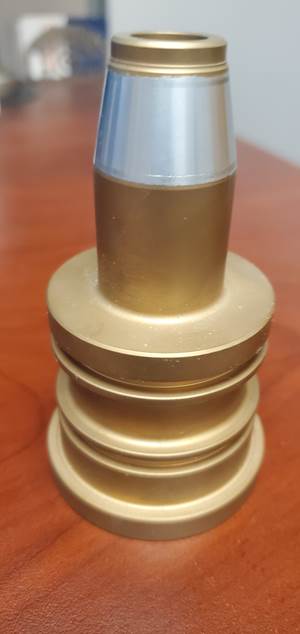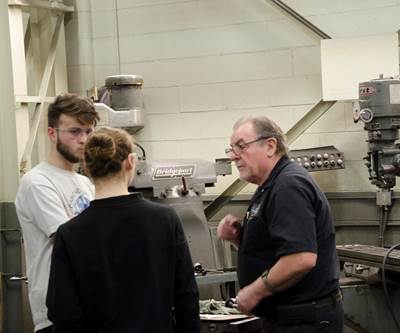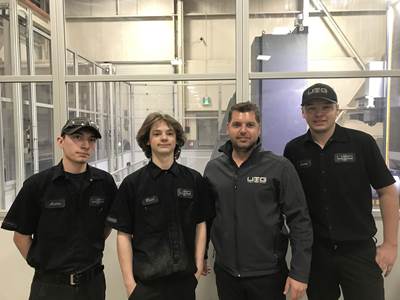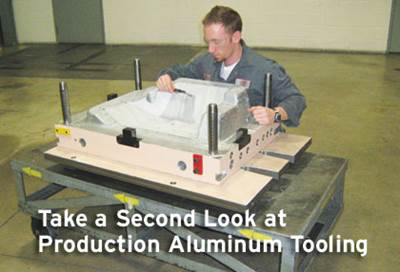Addressing Aluminum Tooling Objections
Mold builder shares the technical and financial advantages it experiences using aluminum tooling.
Mold builders need to ask themselves if their shops will be ready when an OEM or key tier supplier looking to remove costs from their operations suggest an aluminum mold.
There are sound technical and economic reasons why aluminum tooling is an appropriate choice for numerous automotive applications. OEMs who have studied aluminum, molders who have adapted their operations to realize the 30 to 50% cycle time advantages of an aluminum mold and mold builders who know how to design and build high-quality aluminum molds are reaping the benefits of this material.
However, if that’s the case, why hasn’t aluminum tooling seen more widespread usage in recent years? Aluminum is a mature material option that has been in use for high-volume applications for around 15 years, but many still do not use it.
Unique Tool and Gauge is one mold shop that is successfully building aluminum molds for automotive applications for several OEMs and tier suppliers with production runs of up to 2.3 million shots on the same mold. Our shop believes that in just about any medium-sized or large-part application, an aluminum mold will be the chief driver of manufacturing productivity, and its usage will guarantee a lower piece part cost.
Here is a breakdown of the technical and financial advantages Unique Tool has experienced with aluminum tooling.
True Material Costs
We hear the complaints that aluminum is much too expensive as compared to P20 steel. In fact, 7000 series aluminum grades might be three to five times more expensive than P20 steel. While that’s true, typically an aluminum mold will be one-third the weight of a steel mold, which mitigates much of P20’s cost advantage. The savings for aluminum mold construction through machining efficiencies can range from 5 to 15%.
Aluminum also helps to reduce mold build and repair time. For example, molds that have more mechanisms and more depth will have more savings in aluminum versus P20, as machining, spotting, drilling and benching will require less time. Also, aluminum’s higher electrical conductivity and lower melting point as compared to steel results in EDM at a rate four to five times higher than steel. The converse of this statement is that “cut and ship” molds for flat, relatively low-profile parts with little build hours due to lack of mechanics will have less of a cost-savings.
Lead times in mold production, whether in steel or aluminum, are a direct relation to build hours on a production mold. So, if mold build hours are reduced through efficiency, whether by material selection or by other means, lead times will be reduced as well.
For example, if a steel mold takes 4,000 hours and 18 weeks to complete, then an aluminum mold for the same part should take 3,400 to 3,600 hours and between 15 to 16 weeks to complete. This represents a 10 to 15% reduction in both build hours and lead time, which is based on Unique Tool’s 15 years of experience with aluminum molds.
Aluminum tooling also improves part dimensional stability or flatness, as the temperatures variances in an aluminum mold are minimal. Plus, the part itself is measurably cooler upon ejection and closer to a fully cured part.
Production Costs
Any discussion of reduced costs using an aluminum mold needs to begin with cycle time reduction. For example, a steel mold running 75,000 shots per year with a 50-second cycle would need to run 250 days per year, producing 300 shots per day. An aluminum mold in that same application would have a substantially faster cycle time. Let’s use a modest 30% cycle time reduction.
In this example, that same part would now require a 38-second cycle, equating to a production run of 192 days per year, which saves approximately 1,400 hours. This savings is a substantial reduction in production costs and overhead, or put another way, 175 extra eight-hour shifts of open capacity.
Unique Tool has also experienced reduced clamp tonnage with its aluminum molds. Smaller injection molding machines reduce costs, and the dramatic weight reduction in an aluminum mold also reduces wear and tear on equipment, such as cranes and presses. All of these reductions lower burden rates and overall piece part pricing.
Part Quality
Aluminum tooling also improves part dimensional stability or flatness, as the temperatures variances in an aluminum mold are minimal. Plus, the part itself is measurably cooler upon ejection and closer to a fully cured part.
Injection pressure requirements affect both part economics and part quality. Of course, smaller molding machines are more economical, but there’s an additional benefit to aluminum. Unique Tool’s customers report fewer pressure requirements to fill an aluminum mold. The reason is the rapid transfer of heat from the resin to the molding surface, instead of the resin taking on the lower temperature of the steel before the heat transfer to the mold.
This transfer creates a thinner “skin” of set plastic on the molding surface. For example, if a part is 2 mm thick and the steel gives a 0.25 mm thick skin, the fountain effect of the resin flow leaves 1.5 mm for the plastic to pass through. If that same part is molded in aluminum, the skin will be about 0.1 mm thick, leaving 1.9 mm for the flow. Less restriction in the mold means less injection pressure is required.
Aluminum tooling is a proven, robust mold material option for molding high-quality automotive parts in almost any volume and at an optimal piece part cost. It’s time for molders and mold builders to take another, more serious look at aluminum tooling before your OEM and tier customers do it for you.
About the Author
Darcy King is the owner, president and CEO of Unique Tool and Gauge.
For More Information
Unique Tool and Gauge
Related Content
How to Protect Soft Base Materials
Choose a suitable mold coating to take the abuse and save your base material.
Read MoreAluminum Machining Efficiency Improved With Milling Inserts
The TungAluMill line has been enhanced with 10 new XVCT-AM inserts, featuring an interface design that augments machining at high speed rates.
Read MoreHow to Select the Right Tool Steel for Mold Cavities
With cavity steel or alloy selection, there are many variables that can dictate the best option for moldmaking.
Read MoreWhat to Look for in Aluminum Mold Alloys
The importance of strength, anodization, weldability, machinability, flatness and porosity to aluminum injection and thermoform molds.
Read MoreRead Next
A School within a Mold Shop
Unique Tool & Gauge has initiated a new, structured one-year training program designed to lead to full-time moldmaking positions with the company.
Read MoreWorkforce Development With A Twist
Two moldmaking companies and the owner of a machine tool distributorship blaze their own trails to recruit, train and inspire young people for careers in manufacturing.
Read MoreTake a Second Look at Production Aluminum Tooling
One moldmaker has put aluminum tooling to the test and advises a second look for your high-volume automotive applications because it can address your quality, cycle time and cost challenges.
Read More
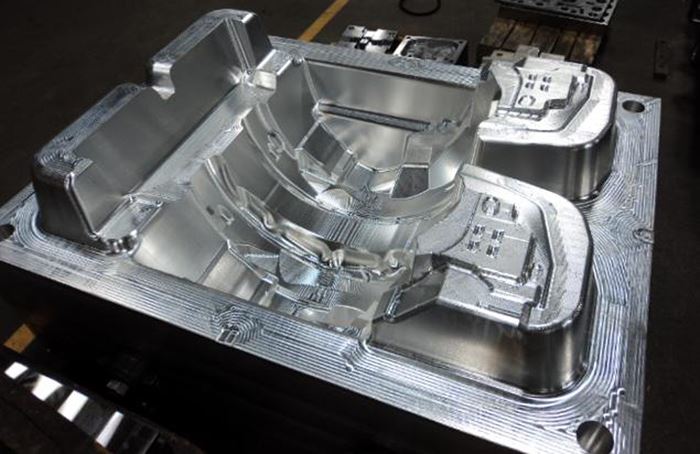
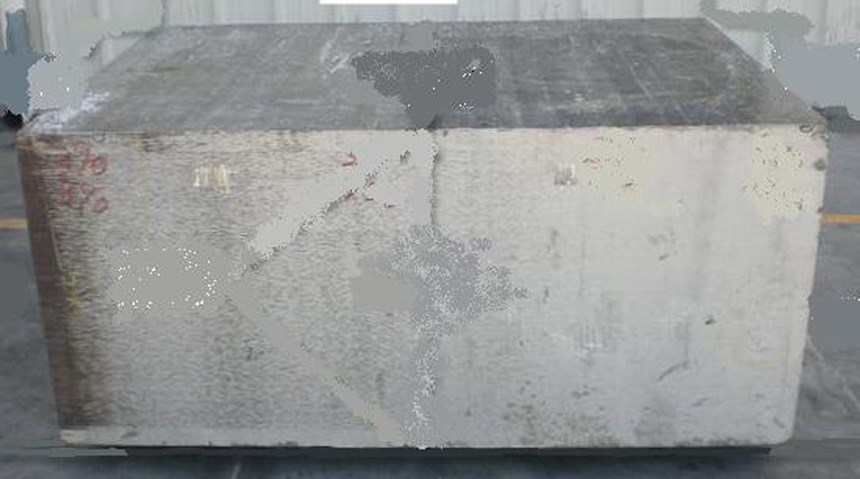


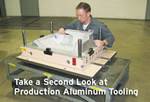




_300x250 3.png;maxWidth=300;quality=90)










